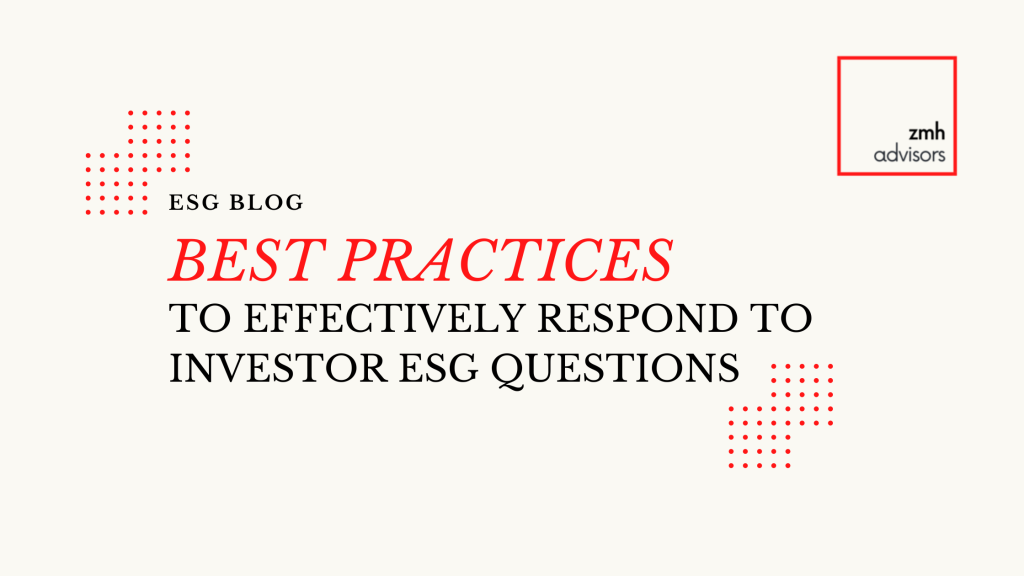For many, filling out a seemingly endless number of ESG questionnaires can feel rather tedious. However, this sometimes-numbing exercise does not diminish the importance and necessity of ensuring questionnaires are filled out in a way that is both effective and productive. Care should be taken with each questionnaire to ensure consistency with accurate and informative responses that will not only provide clarity, but also facilitate friendly relationships with investors.
Best Practice #1: Craft Effective Responses
Understanding the purpose and scope is the first step in tackling an ESG questionnaire. If you are trying to save time by copy & pasting answers from other questionnaires you have already completed, you might miss the mark.
Take a step back and conduct the necessary research to fully comprehend why a particular rating agency or investor has asked you to fill out this questionnaire. Is it different than other questionnaires you have received in the past from that particular party? If so, how? And even more importantly, why is it different? It’s important to know the big picture before you dive in, as it may help you provide more detailed responses.
Additionally, make sure to utilize industry-specific standards and frameworks when filling out questionnaires as a natural starting point. Then, fill in the blanks by providing context and explanations for any apparent data gaps. Give an accurate and balanced representation of your company, even if it might not be the most polished story to tell. The important thing to keep in mind when responding to ESG inquires is that doing so gives you the opportunity to control the narrative of your company through honesty and transparency.
Best Practice #2: Ensure Consistency Across Responses
We know that having too many “cooks in the kitchen” can lead to undesirable results. This applies to ESG questionnaires too. These questionnaires might initially be sent to the IR department, the corporate secretary’s office, the CFO, or even General Counsel. If the company has a Chief Sustainability Officer or Chief Diversity Officer, they, of course, are natural candidates to be the addressee as well. Regardless of who receives the questionnaire, it’s critical for every company to develop an internal process for responding to ESG inquires that promotes the crafting of consistent responses that have been vetted for accuracy and completeness. This process should be updated over time, and considered part of a company’s disclosure controls for SEC reporting purposes.
As part of this process, consider how you can best implement the following elements of disclosure controls:
- Establish a centralized database to ensure consistency in your responses;
- Create a system for tracking and updating your ESG performance metrics; and
- Establish a process for tracking and responding to inquiries to effectively manage and monitor investor interest in particular topics.
How ZMH Advisors can help:
- Utilize ZMH’s proprietary ESG dashboard to eliminate time spent on researching investor priorities. Understand “red flag” areas that investors are focused on and search through recent questions asked by investors during engagements.
- For companies that have already publicly disclosed how they are handling ESG issues, we can assist with creating consistent responses and help you proactively engage investors through an ESG roadshow to reduce the number of inbound ESG inquiries.
- For companies that have not publicly disclosed ESG data – or aren’t ready to draft a full ESG report – we can help you to draft a simple ESG Profile that can be posted on your IR web page in an effort to begin crafting your ESG story and addressing the most common top priorities of investors and rating agencies.

Posted Date: 04-12-23
